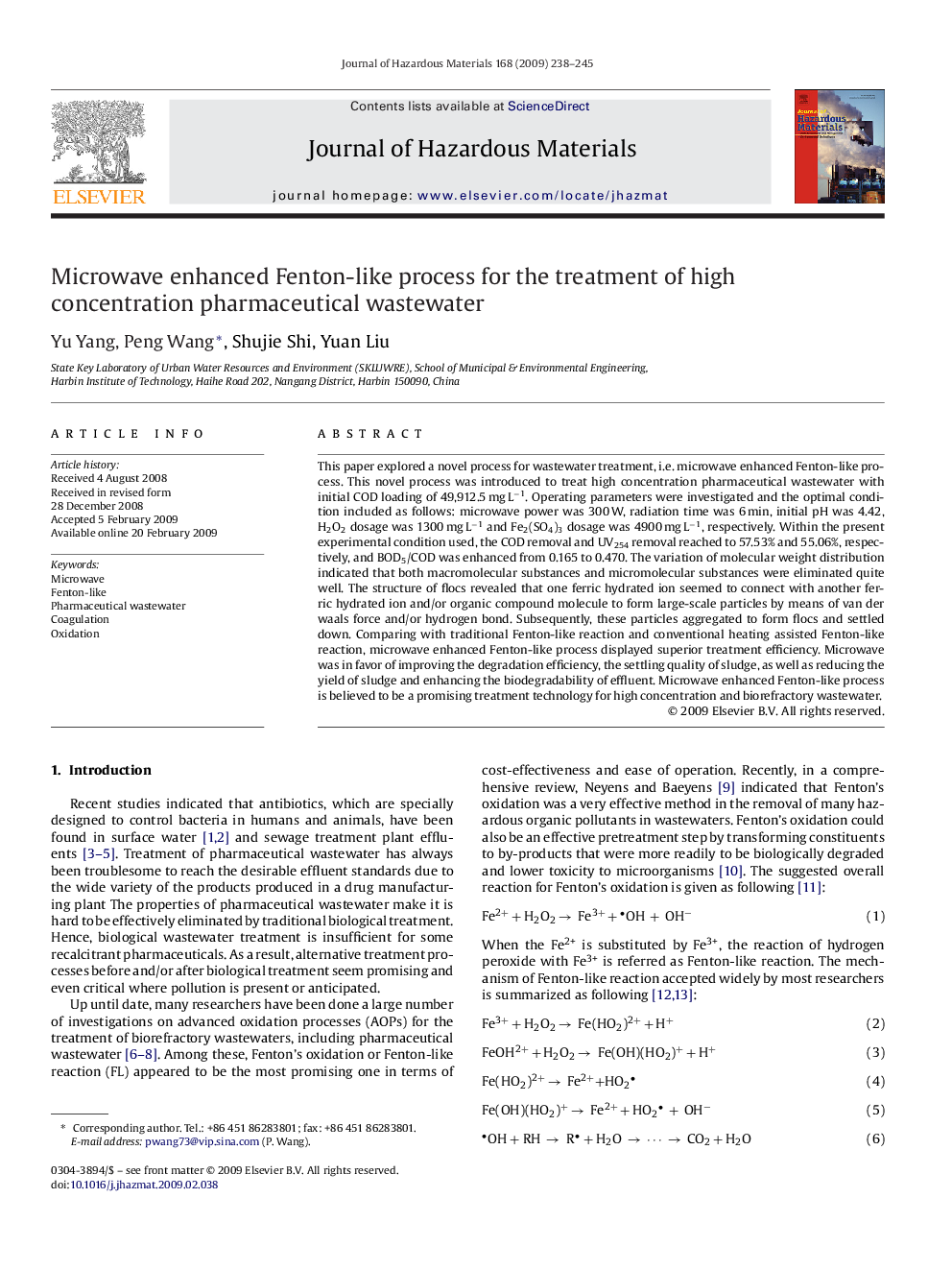| Article ID | Journal | Published Year | Pages | File Type |
|---|---|---|---|---|
| 581334 | Journal of Hazardous Materials | 2009 | 8 Pages |
This paper explored a novel process for wastewater treatment, i.e. microwave enhanced Fenton-like process. This novel process was introduced to treat high concentration pharmaceutical wastewater with initial COD loading of 49,912.5 mg L−1. Operating parameters were investigated and the optimal condition included as follows: microwave power was 300 W, radiation time was 6 min, initial pH was 4.42, H2O2 dosage was 1300 mg L−1 and Fe2(SO4)3 dosage was 4900 mg L−1, respectively. Within the present experimental condition used, the COD removal and UV254 removal reached to 57.53% and 55.06%, respectively, and BOD5/COD was enhanced from 0.165 to 0.470. The variation of molecular weight distribution indicated that both macromolecular substances and micromolecular substances were eliminated quite well. The structure of flocs revealed that one ferric hydrated ion seemed to connect with another ferric hydrated ion and/or organic compound molecule to form large-scale particles by means of van der waals force and/or hydrogen bond. Subsequently, these particles aggregated to form flocs and settled down. Comparing with traditional Fenton-like reaction and conventional heating assisted Fenton-like reaction, microwave enhanced Fenton-like process displayed superior treatment efficiency. Microwave was in favor of improving the degradation efficiency, the settling quality of sludge, as well as reducing the yield of sludge and enhancing the biodegradability of effluent. Microwave enhanced Fenton-like process is believed to be a promising treatment technology for high concentration and biorefractory wastewater.
